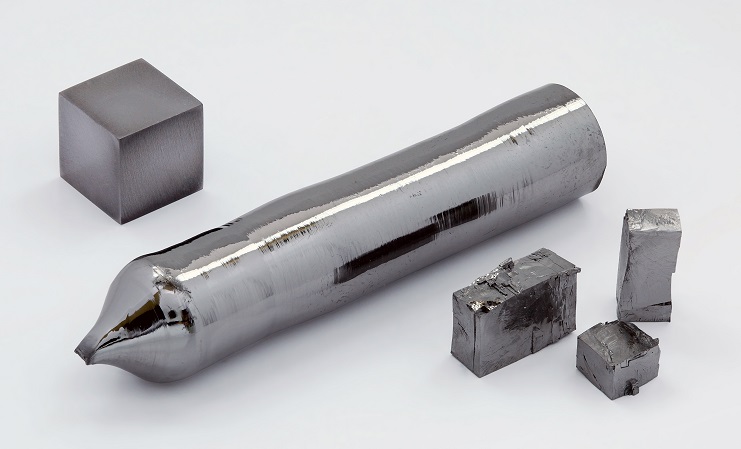Properties and Applications of Tantalum

Properties and Applications of Tantalum
Tantalum is very hard, and its melting point is as high as 2996, second only to tungsten and rhenium. Tantalum is ductile and can be drawn into filaments or processed into tantalum foil. Its coefficient of thermal expansion is very small, only 6.6 percent per degree Celsius rise. In addition, its toughness is even better than copper. Due to its excellent properties, the applications of tantalum are very broad in the industry.

Properties and Applications of Tantalum
The Chemical Properties of Tantalum
Tantalum also has very good chemical properties and high corrosion resistance. It does not react to hydrochloric acid, concentrated nitric acid, and "aqua regia" under cold or hot conditions.
Tantalum, however, can be corroded by hot concentrated sulfuric acid. Tantalum will not be corroded by concentrated sulfuric acid below 150 degrees Celsius. It will react only above this temperature. When tantalum is placed in concentrated sulfuric acid at 175 degrees Celsius for 1 year, the corroded thickness is 0.0004 mm.
The corrosion rate of tantalum in fuming sulfuric acid (containing 15% SO3) is faster than that in concentrated sulfuric acid. When immersed in this solution at 130°C for 1 year, the corrosion thickness of the surface of tantalum metal is 15.6 mm.
Tantalum is also corroded by phosphoric acid at high temperatures, but the reaction usually occurs above 150 degrees. When immersed in 85% phosphoric acid for 1 year at a temperature of 250 degrees, the corrosion thickness of the tantalum metal surface is about 20 mm.
In addition, tantalum can be quickly dissolved in the mixed acid of hydrofluoric acid and nitric acid, and can also be dissolved in hydrofluoric acid. But tantalum is more afraid of strong alkalis. In a caustic soda solution with a 40% concentration at 110 degrees Celsius, tantalum will be quickly dissolved. In a potassium hydroxide solution of the same concentration, as long as the temperature reaches 100 degrees Celsius, tantalum will be quickly dissolved.
In addition to the above situations, below 150 degrees Celsius, common inorganic salts generally cannot corrode tantalum.
The Applications of Tantalum
The properties of tantalum metal make the application field of tantalum very broad. In the equipment for producing various inorganic acids, tantalum can be used to replace stainless steel, and the service life of the equipment can be increased by several tens of times. In addition, tantalum can replace the precious metal platinum in chemical, electronic, electrical, and other industries, so that the cost can be greatly reduced.
In addition, tantalum has also played an increasingly important role in the military field. For example, tantalum is used to make capacitors in military equipment. The US military industry is extremely developed, and it is the world's largest arms exporter. Half of the world's output of tantalum metal is used in the production of tantalum capacitors. The United States Department of Defense Logistics Agency once bought out one-third of the world's tantalum powder.
Tantalum is also an ideal material for making electron emission tubes and high-power electron tube parts. In the chemical industry, anti-corrosion equipment made of tantalum is used to produce strong acids, bromine, ammonia, and so on. Moreover, tantalum can be used as a structural material for the combustion chamber of an aircraft engine.
Besides, tantalum-tungsten, tantalum-tungsten-hafnium, and tantalum-hafnium alloys are used as heat-resistant and high-strength materials for rockets, missiles, and jet engines, as well as parts for control and regulation equipment. Tantalum is easy to process and shape and can be used as support accessories, heat shields, heaters, and heat sinks in high-temperature vacuum furnaces.
Furthermore, tantalum can be used as a material for orthopedics and surgery. Tantalum carbide is used to make cemented carbide. The borides, silicides, and nitrides of tantalum and their alloys are used as heat-release elements and liquid metal cladding materials in the atomic energy industry, and tantalum oxide is used in the manufacture of advanced optical glasses and catalysts.
Conclusion
Thank you for reading our article and we hope it can help you have a better understanding of the properties and applications of tantalum. If you want to know about tantalum, we would like to advise you to visit Advanced Refractory Metals (ARM) for more information.
Headquartered in Lake Forest, California, USA, Advanced Refractory Metals (ARM) is a leading manufacturer & supplier of refractory metals & alloys across the world. It provides customers with high-quality refractory metals & alloys such as tantalum, molybdenum, rhenium, tungsten, titanium, and zirconium at a very competitive price.
{{item.content}}
LEVE A REPLY
{{item.children[0].content}}
{{item.content}}






